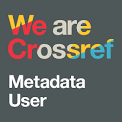Face-To-Face Learning Methods Are Limited in Overcoming Students' Learning Difficulties During The Pandemic Covid-19
DOI:
https://doi.org/10.51574/ijrer.v1i3.293Keywords:
Learning Method, The Pandemic Covid-19, Learning Difficulties, PJOKAbstract
In Indonesia, the impact of the pandemic was quite severe. This is evidenced by the high mortality rate. To reduce its spread, the minister of education and the government imposed an online learning system which was found to be less effective at elementary school levels, especially in physical education and health lessons, which required a lot of physical activity. Various obstacles that occurred in the learning model in the network resulted in educators preferring the limited face-to-face learning model as a means of delivering material to students. Despite the great risk, it turns out that this limited face-to-face learning model is more effectively used than other learning models. To reduce risk, health protocols must be carried out before starting learning. The results of this limited face-to-face learning show an increase in students' understanding of the material at MI Maarif NU Kebalandono. As a suggestion, a professional teacher must also be able to adapt and adjust to the learning they will do in class under any conditions so that the competencies expected in the curriculum can be conveyed properly to students.
References
Abdullah, W. (2018). Model blended learning dalam meningkatkan efektifitas pembelajaran. Fikrotuna, 7(1), 855-866. https://doi.org/10.32806/jf.v7i1.3169
Ahmed, S., Taqi, H. M., Farabi, Y. I., Sarker, M., Ali, S. M., & Sankaranarayanan, B. (2021). Evaluation of flexible strategies to manage the COVID-19 pandemic in the education sector. Global Journal of Flexible Systems Management, 22(2), 81-105.
Alam, F. F., & Maryanti, R. (2022). Response of Junior High School Students About Online Learning of PJOK Lessons in The Time of The Covid-19 Pandemic. Jurnal Abdimas Kartika Wijayakusuma, 3(1), 20-28.
Anderson, T. (2004). Teaching in an online learning context. Theory and practice of online learning, 273.
Arif, M. I., & Setyawan, R. (2022). Respons peserta didik dan orang tuan terhadap pembelajaran jarak jauh pada mata pelajaran pendidikan jasmani. Sriwijaya Journal of Sport, 1(2), 63-74.
Bailey, R., Armour, K., Kirk, D., Jess, M., Pickup, I., Sandford, R., & Education, B. P. (2009). The educational benefits claimed for physical education and school sport: an academic review. Research papers in education, 24(1), 1-27. https://doi.org/10.1080/02671520701809817
Bozkurt, A., Jung, I., Xiao, J., Vladimirschi, V., Schuwer, R., Egorov, G., ... & Paskevicius, M. (2020). A global outlook to the interruption of education due to COVID-19 pandemic: Navigating in a time of uncertainty and crisis. Asian Journal of Distance Education, 15(1), 1-126. http://www.asianjde.com/ojs/index.php/AsianJDE/article/view/462
Chen, K. C., & Jang, S. J. (2010). Motivation in online learning: Testing a model of self-determination theory. Computers in Human Behavior, 26(4), 741-752.
Churiyah, M., Sholikhan, S., Filianti, F., & Sakdiyyah, D. A. (2020). Indonesia education readiness conducting distance learning in Covid-19 pandemic situation. International Journal of Multicultural and Multireligious Understanding, 7(6), 491-507. http://dx.doi.org/10.18415/ijmmu.v7i6.1833
Dakhi, O., Jama, J., & Irfan, D. (2020). Blended learning: a 21st century learning model at college. International Journal Of Multi Science, 1(08), 50-65. https://multisciencejournal.com/index.php/ijm/article/view/92
Dwiyogo, W. D., & Radjah, C. L. (2020). Effectiveness, efficiency and instruction appeal of blended learning model. https://www.learntechlib.org/p/217970/
Eryani, Y., & Mulyanti, B. (2021). Technology-based blended learning to accommodate offline and online learning. In IOP Conference Series: Materials Science and Engineering (Vol. 1098, No. 3, p. 032010). IOP Publishing.
Fathoni, A. F. (2018). The Role of Blended Learning on Cognitive Step in Education of Sport Teaching by Adjusting the Learning Style of the Students.
Fryer, L. K., & Bovee, H. N. (2016). Supporting students' motivation for e-learning: Teachers matter on and offline. The Internet and Higher Education, 30, 21-29. https://doi.org/10.1016/j.iheduc.2016.03.003
Gallahue, D. L., & Donnelly, F. C. (2007). Developmental physical education for all children. Human Kinetics.
Giatman, M., Siswati, S., & Basri, I. Y. (2020). Online learning quality control in the pandemic Covid-19 era in Indonesia. Journal of Nonformal Education, 6(2), 168-175. https://doi.org/10.15294/jne.v6i2.25594
Guru, T. A. (2007). Pendidikan Jasmani Olahraga dan Kesehatan. Jakarta. Erlangga.
Hellison, D. (2010). Teaching personal and social responsibility through physical activity. Human Kinetics.
Khamal, S. Y. B. (2020). Tantangan Pembelajaran Olahraga dalam Pembelajaran Jarak Jauh. Buletin Pengembangan Perangkat Pembelajaran, 2(2). https://journals.ums.ac.id/index.php/bppp/article/view/13809/6536
Hebebci, M. T., Bertiz, Y., & Alan, S. (2020). Investigation of views of students and teachers on distance education practices during the Coronavirus (COVID-19) Pandemic. International Journal of Technology in Education and Science, 4(4), 267-282. https://eric.ed.gov/?id=EJ1271267
Jalinus, N. (2021). Developing blended learning model in vocational education based on 21st century integrated learning and industrial revolution 4.0. Turkish Journal of Computer and Mathematics Education (TURCOMAT), 12(8), 1239-1254. https://doi.org/10.17762/turcomat.v12i8.3035
Joyce, B., Calhoun, E., & Hopkins, D. (2008). Models of learning, tools for teaching. McGraw-Hill Education (UK).
Kim, I., Lee, Y. S., Ward, P., & Li, W. (2015). A critical examination of movement content knowledge courses in physical education teacher education programs. Journal of Teaching in Physical Education, 34(1), 59-75.
Korucu, A. T., & Alkan, A. (2011). Differences between m-learning (mobile learning) and e-learning, basic terminology and usage of m-learning in education. Procedia-Social and Behavioral Sciences, 15, 1925-1930. https://doi.org/10.1016/j.sbspro.2011.04.029
Kumar, A., Zhou, A., Tucker, G., & Levine, S. (2020). Conservative q-learning for offline reinforcement learning. Advances in Neural Information Processing Systems, 33, 1179-1191. Lau, E. Y. H., & Lee, K. (2021). Parents’ views on young children’s distance learning and screen time during COVID-19 class suspension in Hong Kong. Early Education and Development, 32(6), 863-880. https://doi.org/10.1080/10409289.2020.1843925
Lisewski, B., & Joyce, P. (2003). Examining the five-stage e-moderating model: designed and emergent practice in the learning technology profession. ALT-J, 11(1), 55-66.
Maftuhin, R. A., Pati, P. K., & Setyawan, D. A. (2021). Efektifitas guru pendidikan jasmani dalam pembelajaran daring. Edu Sportivo: Indonesian Journal of Physical Education, 2(2), 106-111. https://doi.org/10.25299/es:ijope.2021.vol2(2).7007
Masgumelar, N. K., & Dwiyogo, W. D. (2020). Development of Game Modification Using Blended Learning in Physical Education, Sports, and Health For Senior High School Students. In The 3rd International Conference on Sports Sciences and Health 2019 (ICSSH 2019) (pp. 95-100). Atlantis Press.
Means, B., Bakia, M., & Murphy, R. (2014). Learning online: What research tells us about whether, when and how. Routledge.
Morley, D., Bailey, R., Tan, J., & Cooke, B. (2005). Inclusive physical education: Teachers’ views of including pupils with special educational needs and/or disabilities in physical education. European Physical Education Review, 11(1), 84-107.
Muhtar, T., & Lengkana, A. S. (2019). Pendidikan jasmani dan olahraga adaptif. UPI Sumedang Press.
Mukarram, M. (2020). Impact of COVID-19 on the UN sustainable development goals (SDGs). Strategic Analysis, 44(3), 253-258. https://doi.org/10.1080/09700161.2020.1788363
Pangrazi, R. P., & Beighle, A. (2019). Dynamic physical education for elementary school children. Human Kinetics Publishers.
Pei, L., & Wu, H. (2019). Does online learning work better than offline learning in undergraduate medical education? A systematic review and meta-analysis. Medical education online, 24(1), 1666538. https://doi.org/10.1080/10872981.2019.1666538
Prasetyo, T., & Zulela, M. S. (2021). Proses Pembelajaran Daring Guru Menggunakan Aplikasi Whatsapp Selama Pandemik Covid-19. Jurnal Elementaria Edukasia, 4(1), 138-150.
Santyasa, I. W. (2007). Model-model pembelajaran inovatif. Universitas Pendidikan Ganesha.
Sihombing, S. O., & Juliana, J. (2021). The Identification of Personal Values and Buying Behavior of Youth During Covid-19 Pandemic in the Indonesian Context. Changes, 25(17), 24.
Simamora, R. M. (2020). The Challenges of online learning during the COVID-19 pandemic: An essay analysis of performing arts education students. Studies in Learning and Teaching, 1(2), 86-103. https://doi.org/10.46627/silet.v1i2.38
Simamora, R. M., De Fretes, D., Purba, E. D., & Pasaribu, D. (2020). Practices, challenges, and prospects of online learning during Covid-19 pandemic in higher education: Lecturer perspectives. Studies in Learning and Teaching, 1(3), 185-208. https://doi.org/10.46627/silet.v1i3.45
Sohn, S. Y., Park, H. Y., & Chang, I. S. (2009). Assessment of a complementary cyber learning system to offline teaching. Expert systems with applications, 36(3), 6485-6491. https://doi.org/10.1016/j.eswa.2008.07.075
Suartama, I. K., Setyosari, P., & Ulfa, S. (2019). Development of an instructional design model for mobile blended learning in higher education. International Journal of Emerging Technologies in Learning, 14(16).
Sudana, I. W. (2021). Meningkatkan motivasi dan hasil belajar siswa menggunakan metode blended learning melalui aplikasi google classroom. Indonesian Journal of Educational Development, 2(1), 38-47. https://doi.org/10.5281/zenodo.4781849
Sujarwo, S., Sukmawati, S., Akhiruddin, A., Ridwan, R., & Siradjuddin, S. S. S. (2020). An analysis of university students’ perspective on online learning in the midst of covid-19 pandemic. Jurnal Pendidikan Dan Pengajaran, 53(2), 125-137. https://doi.org/10.23887/jpp.v53i2.24964
Whear, R., Thompson‐Coon, J., Boddy, K., Ford, T., Racey, D., & Stein, K. (2013). The effect of teacher‐led interventions on social and emotional behaviour in primary school children: a systematic review. British Educational Research Journal, 39(2), 383-420. https://doi.org/10.1080/01411926.2011.650680
Wintarti, A., Ekawati, R., & Fiangga, S. (2019). Blended Learning as a Learning Strategy in the Disruptive Era. In Journal of Physics: Conference Series (Vol. 1387, No. 1, p. 012127). IOP Publishing.
Zakiyah, U., & Kusumawardani, V. (2021). Perubahan Interaksi Sosial Masyarakat Pedesaan Sejak Pandemi COVID 19. In Prosiding Seminar Nasional Perbatasan Dan Desa (SNPD) (Vol. 1, No. 1, pp. 34-44).














1.png)













